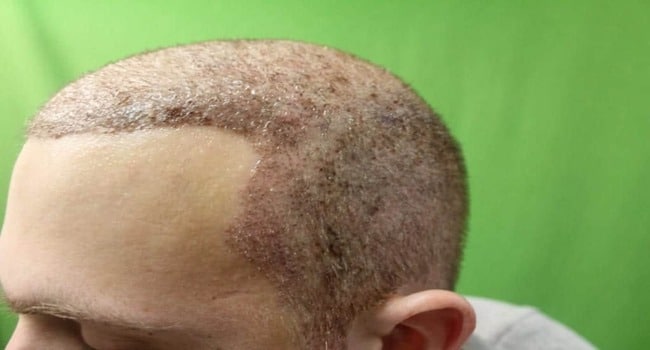Losing your hair can be hard, and it can make you feel bad about your confidence and self-esteem. A hair transplant procedure can help people get a bigger head of hair. For those who have had one, the process can be life-changing. However, achieving optimal results doesn’t always end with the surgical procedure. Many individuals consider additional treatments, such as scalp micro pigmentation (SMP), to enhance the appearance of their transplanted hair and create a more natural-looking hairline. But when is the right time to undergo scalp micropigmentation after hair transplant?
The Hair Transplant Process:
Hair transplants involve surgically moving hair follicles from donor areas Patients should have realistic expectations regarding the results of both the hair transplant and scalp micro pigmentation procedures. to areas where hair is falling out or becoming thin. The goal of this process is to move genetically healthy hair cells to places where hair growth has slowed down.
A hair transplant’s success relies on many things, such as the skill of the surgeon, the quality of the donor’s hair, and the person’s hair loss pattern and traits. Patients go through a recovery period after the operation. During this time, the transplanted follicles get used to their new home and start to grow hair.
Introducing Scalp Micropigmentation:
Scalp micropigmentation is a non-invasive beauty treatment that includes tattooing tiny colored dots on the scalp to make them look like hair follicles. It is often used to make it look like the person has more hair, hide scars from earlier hair transplants, or improve the results of a transplant by making the hairline thicker and more defined.
Unlike hair transplant surgery, which involves a significant recovery period, scalp micro pigmentation typically requires minimal downtime. However, the decision to undergo SMP should be carefully considered, especially in conjunction with a recent hair transplant.
Timing Considerations:
Determining the right time for scalp micro pigmentation after a hair transplant involves several factors that must be carefully evaluated by both the patient and the medical professionals involved. Here are some key considerations:
Healing Process: The scalp undergoes a healing process following a hair transplant, during which scabs form and eventually fall off, revealing the newly transplanted hair follicles. It’s essential to allow an adequate amount of time for the scalp to heal completely before considering scalp micro pigmentation. Typically, this healing period ranges from two to four weeks, but it may vary depending on the individual’s healing rate and the specific techniques used during the transplant procedure.
Hair Growth: Patience is crucial when waiting for the transplanted hair to grow. It can take several months for the newly transplanted follicles to produce visible hair growth. Before undergoing scalp micro pigmentation, patients should wait until their transplanted hair has reached a sufficient length and density to ensure that the SMP procedure complements the natural hairline effectively.
Consultation with Experts: Consulting with experienced hair restoration specialists or SMP practitioners is essential for determining the optimal timing for scalp micro pigmentation. These professionals can assess the patient’s circumstances, including the progress of their hair transplant recovery and their desired aesthetic outcomes, to provide personalized recommendations.
Patient Expectations: Managing expectations is critical throughout the post-hair transplant journey. Patients should not have unrealistic hopes for the outcomes of both the hair transplant and the scalp micro pigmentation treatments. While SMP can enhance the appearance of transplanted hair and create the illusion of fuller density, it is not a substitute for natural hair growth.
Conclusion:
In conclusion, the decision of when to undergo scalp micro pigmentation after a hair transplant requires careful consideration and consultation with knowledgeable professionals. There is no one-size-fits-all answer, but patients should make sure they give their scalps enough time to heal and the grafted hair enough time to grow before they consider SMP. People can confidently go through the time after a hair transplant and get the results they want if they understand the details of both procedures and work closely with trained professionals.
